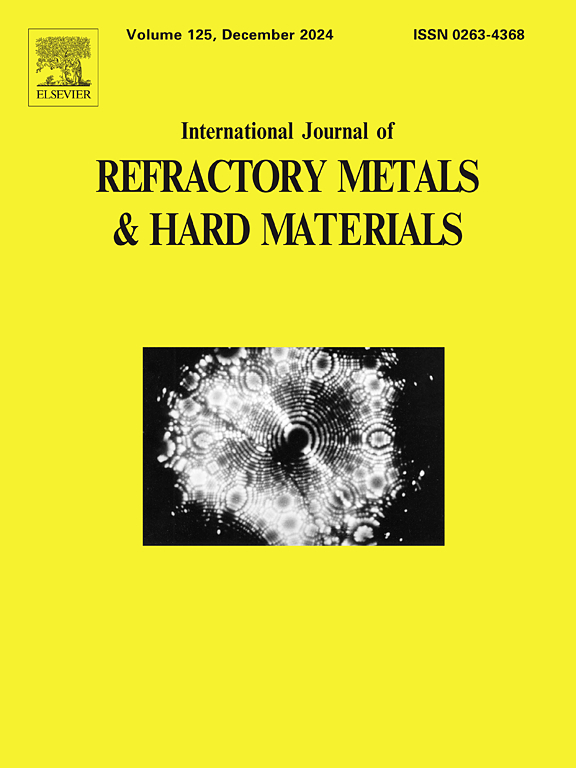Experimental research on the double-sided grinding of PCBN materials with different microstructures
IF 4.2
2区 材料科学
Q2 MATERIALS SCIENCE, MULTIDISCIPLINARY
International Journal of Refractory Metals & Hard Materials
Pub Date : 2025-02-28
DOI:10.1016/j.ijrmhm.2025.107126
引用次数: 0
Abstract
PCBN is the most suitable tool material for machining of ferrous materials, the double-sided grinding is the necessary operation in preparation of PCBN tools. In this paper, surface roughness and material removal rate in double-sided grinding of PCBN materials with different grain sizes and binder phases are studied. Based on the results, the PCBN material with low Al content achieves lower surface roughness and higher material removal rate. The binder phase with low Al content exhibits greater binding strength and is more difficult to remove, it also reduces the possibility of the spalling pit formation on the machined surface. The grain size of PCBN has a greater influence on surface roughness and material removal rate. The PCBN material with small grain size presents superior surface quality and material removal rate, and is easier to remove. The optimal double-sided grinding parameters are obtained for PCBN tools, the upper abrasive disc speed of 20 rpm, the lower abrasive disc speed of 30 rpm and the inner pin ring speed of 30 rpm, the grinding pressure of 300 kPa. The results can guide the actual preparation process for PCBN tools.
不同微结构PCBN材料双面磨削的实验研究
PCBN是最适合加工黑色金属材料的刀具材料,双面磨削是制备PCBN刀具的必要工序。研究了不同晶粒尺寸和结合剂相的PCBN材料双面磨削的表面粗糙度和材料去除率。结果表明,低Al含量的PCBN材料具有较低的表面粗糙度和较高的材料去除率。Al含量低的结合相结合强度更大,去除难度更大,也减少了加工表面形成剥落坑的可能性。PCBN的晶粒尺寸对表面粗糙度和材料去除率的影响较大。晶粒尺寸小的PCBN材料具有较好的表面质量和材料去除率,且易于去除。得到了PCBN刀具双面磨削的最佳参数:上磨盘转速为20 rpm,下磨盘转速为30 rpm,内销环转速为30 rpm,磨削压力为300 kPa。研究结果可以指导PCBN刀具的实际制备过程。
本文章由计算机程序翻译,如有差异,请以英文原文为准。
求助全文
约1分钟内获得全文
求助全文
来源期刊
CiteScore
7.00
自引率
13.90%
发文量
236
审稿时长
35 days
期刊介绍:
The International Journal of Refractory Metals and Hard Materials (IJRMHM) publishes original research articles concerned with all aspects of refractory metals and hard materials. Refractory metals are defined as metals with melting points higher than 1800 °C. These are tungsten, molybdenum, chromium, tantalum, niobium, hafnium, and rhenium, as well as many compounds and alloys based thereupon. Hard materials that are included in the scope of this journal are defined as materials with hardness values higher than 1000 kg/mm2, primarily intended for applications as manufacturing tools or wear resistant components in mechanical systems. Thus they encompass carbides, nitrides and borides of metals, and related compounds. A special focus of this journal is put on the family of hardmetals, which is also known as cemented tungsten carbide, and cermets which are based on titanium carbide and carbonitrides with or without a metal binder. Ceramics and superhard materials including diamond and cubic boron nitride may also be accepted provided the subject material is presented as hard materials as defined above.

 求助内容:
求助内容: 应助结果提醒方式:
应助结果提醒方式:


